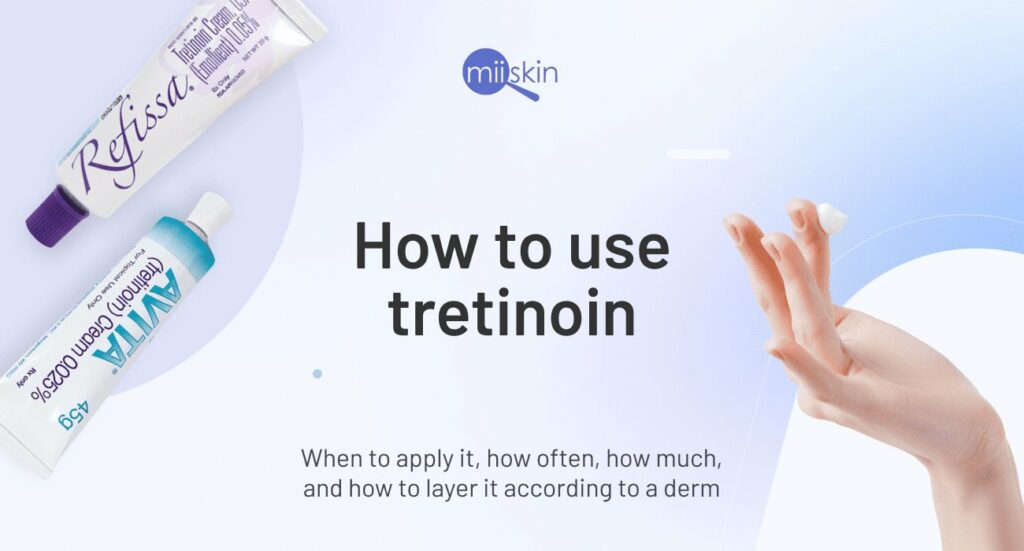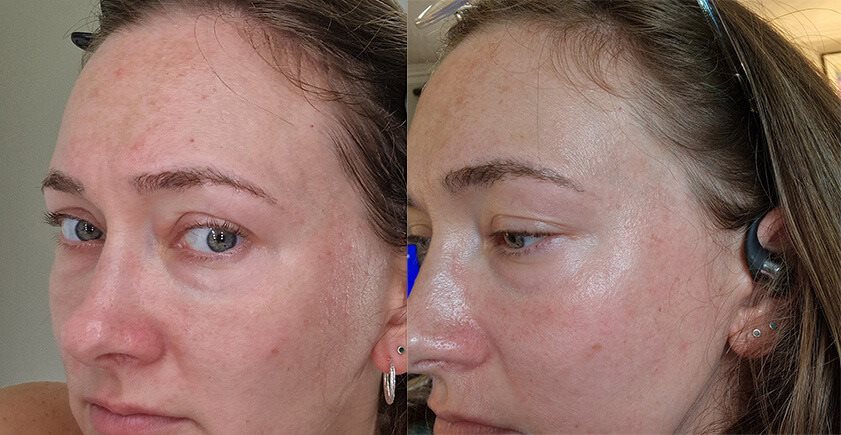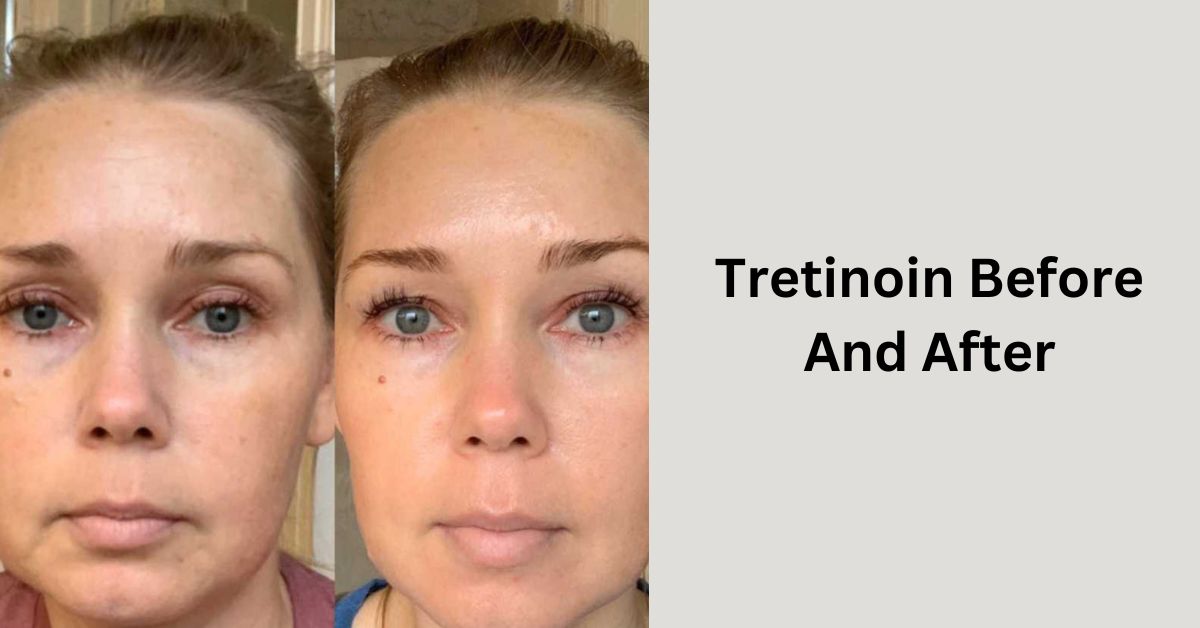Tretinoin Before And After – Transform Your Skin!
Before using tretinoin, my skin struggled with acne and uneven texture. After incorporating it into my routine, I noticed a significant improvement in my complexion—my acne cleared up, and my skin became smoother and more radiant.
Tretinoin is a powerful skincare ingredient that belongs to the retinoid family. It’s often called by its brand names, like Retin-A or Retrieve. It’s a form of Vitamin A used to improve skin health.
In this article, we will explore the transformative power of tretinoin, from its before and after effects to the personal experiences of its users.
Table of Contents:
Why Use Tretinoin? – Discover Benefits Today!
Tretinoin is a powerful skincare ingredient with several benefits:

- Anti-Aging: Tretinoin helps reduce the appearance of wrinkles, fine lines, and other signs of aging by promoting collagen production and improving skin texture.
- Acne Treatment: It treats acne by unclogging pores, reducing inflammation, and preventing new acne breakouts.
- Pigmentation Correction: Tretinoin can help lighten dark spots, hyperpigmentation, and melasma by promoting skin cell turnover and fading pigmented areas.
- Pore Reduction: It helps minimize the appearance of enlarged pores by regulating oil production and stimulating collagen, which provides structural support to the skin.
- Overall Skin Improvement: Regular use of tretinoin can lead to smoother, more precise, and more radiant skin by addressing multiple skin concerns simultaneously.
In summary, tretinoin is a versatile skincare ingredient that can address various skin issues and promote overall health and appearance.
When to Use Tretinoin? – Timing Matters!
Tretinoin is typically used in the evening, before bedtime. This is because it can make your skin more sensitive to sunlight. Using it at night reduces the risk of sun exposure, which can cause irritation or damage to the skin.
Additionally, applying tretinoin at night allows it to work while you sleep, promoting cell turnover and collagen production for smoother, healthier skin.
It’s essential to follow the instructions provided by your dermatologist or healthcare provider regarding the frequency and timing of tretinoin application to maximize its effectiveness and minimize side effects.
How Does Tretinoin Work? – Unveil Its Magic!
Tretinoin works by helping your skin renew itself more quickly. It belongs to a family of molecules called retinoids, potent skincare ingredients. When you apply tretinoin to your skin, it can:

- Speed up the turnover of skin cells: This means that old, damaged skin cells are shed faster, allowing newer, healthier cells to come to the surface.
- Stimulate collagen and elastin production: Collagen and elastin are proteins that provide structure and elasticity to your skin. Tretinoin encourages the production of these proteins, helping to improve skin firmness and elasticity.
- Reduce oil production: Tretinoin can also decrease the amount of oil your skin produces, which can be helpful for acne-prone skin.
- Fade pigmentation: It can help to lighten dark spots and hyperpigmentation by promoting the turnover of skin cells and reducing the production of melanin, the pigment responsible for skin color.
Tretinoin improves skin appearance by promoting cell turnover, stimulating collagen production, reducing oiliness, and fading pigmentation.
Before Using Tretinoin:
Before starting tretinoin, it’s essential to understand its benefits and potential side effects. Consult a dermatologist to discuss whether tretinoin suits your skin concerns. It’s also wise to assess your skin sensitivity and tolerance levels.
After Using Tretinoin:
After incorporating tretinoin into your skincare routine, you may notice skin texture improvements, acne reduction, and pigmentation fading over time. It’s essential to follow a consistent application schedule and monitor any changes in your skin.
Remember to use sunscreen daily, as tretinoin can increase sun sensitivity. If you experience any adverse effects, consult your dermatologist for guidance.
Read Also: The Bloodline – Explore The Details With One Click!
Tips for Tretinoin Application – Expert Advice Here!
Here are some tips for applying tretinoin in easy wording:

- Start Slow: Apply tretinoin every other night to allow your skin to adjust gradually.
- Pea-Sized Amount: Use a small amount of tretinoin, about the size of a pea, for your entire face.
- Avoid Sensitive Areas: Be careful not to apply tretinoin near your eyes, nostrils, or lips, as these areas can be more sensitive.
- Cleanse First: Wash your face with a gentle cleanser and pat dry before applying tretinoin to ensure your skin is clean.
- Moisturize After: Wait for your skin to dry completely, then apply a moisturizer to help reduce dryness and irritation.
- Sun Protection: Always wear sunscreen during the day when using tretinoin, as it can increase your skin’s sensitivity to the sun.
- Patience is Key: It may take several weeks to see results with tretinoin, so be patient and consistent with your application.
- Listen to Your Skin: If you experience excessive dryness, redness, or irritation, reduce the frequency of tretinoin application or consult your dermatologist for advice.
- Avoid Harsh Products: Steer clear of harsh exfoliants or products containing benzoyl peroxide or salicylic acid while using tretinoin to prevent further irritation.
- Consult Your Dermatologist: If you have any concerns or questions about using tretinoin, don’t hesitate to seek guidance from a dermatologist.
Managing Side Effects of Tretinoin:
- If you experience any discomfort like burning, itching, or redness after applying tretinoin, there are steps you can take to manage these side effects.
- Use a gentle cleanser and moisturizer to soothe your skin. Look for products with ingredients like glycerin, hyaluronic acid, or squalene.
- Apply a bland moisturizer frequently, especially if you notice dryness or peeling.
- Consider reducing the frequency of tretinoin application if irritation persists. Start with every other night and gradually increase as tolerated.
- Avoid harsh skincare products like benzoyl peroxide or salicylic acid on the same area as tretinoin, as they can increase skin irritation.
Monitoring Progress with Tretinoin:

- Keep track of changes in your skin texture, tone, and overall appearance before and after starting tretinoin.
- Take photos of your skin at regular intervals to visually monitor progress. Pay attention to fine lines, wrinkles, acne, and pigmentation changes.
- Note any side effects or improvements you observe while using tretinoin. This will help you and your dermatologist assess the effectiveness of the treatment.
- Be patient and consistent with your tretinoin routine. Results may take several weeks to become noticeable, so staying committed to the regimen is essential.
- Consult your dermatologist if you have any concerns or questions about your progress with tretinoin. They can provide guidance and adjustments to optimize your skincare routine.
Read Also: Elçin Afacan – The Ultimate Guide For You!
Frequently Asked Questions:
1. How long does it take for tretinoin to show results?
It takes about 2 to 3 weeks to start seeing changes in your skin from using tretinoin. But the full effect might take around six weeks or even longer. So, be patient!
2. Should I use tretinoin every night?
It depends on how your skin reacts. Some people can use it every night, but others might find it too harsh. Start slow every other night, and then see how your skin feels. If it’s okay, you can increase your nightly use.
3. How long does the tretinoin “uglies” last?
The “uglies” are the not-so-fun side effects when you start tretinoin, like redness and peeling. They usually happen initially and can last a few days to a few weeks. But don’t worry, they’ll get better as your skin gets used to it.
4. How does tretinoin make you look younger?
Tretinoin helps your skin make more collagen, which keeps it firm and smooth. It also speeds up the turnover of skin cells and fades dark spots. Over time, this can make your skin look fresher, softer, and younger. Just remember, it’s more about prevention than a quick fix!
Conclusion:
Using tretinoin can change your skin for the better. Be patient and consistent; you’ll see excellent results in your skin’s looks and feelings.
Read Also:





